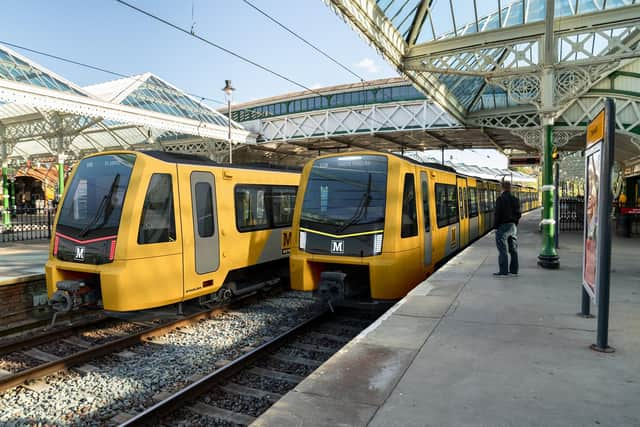Why the new £362 million Tyne and Wear Metro fleet will be much better at surviving intense heatwaves
and live on Freeview channel 276
Last week’s scorching weather threw public transport systems across the country into chaos, with Metro passengers briefly advised not to travel as the North East recorded temperatures approaching 40C.
Some services were also suspended on parts of the network due to overhead lines sagging in the heat.
Advertisement
Hide AdAdvertisement
Hide AdBut commuters who dreaded stepping foot on the Metro’s ageing carriages, which have been in service for more than 40 years, in the heatwave can look forward to more comfortable journeys soon.


A long-awaited new fleet of Metro trains is currently being built in Switzerland and drivers have already started training on the first of the new models, which are due to arrive in the North East later this year, before entering service in 2023.
And passengers will be relieved to know that the new fleet will, unlike the outdated current crop, boast an “advanced” air conditioning system to keep them cool when the hot weather arrives.
Another feature that could help the trains overcome the problems caused by extreme heat is an on-board battery that will allow them to keep moving even when overhead lines fail.
Advertisement
Hide AdAdvertisement
Hide AdA Nexus spokesperson said: “The new Metro fleet will transform the customer experience in terms of comfort and quality.
“The Stadler trains will have an advanced digital climate control system that will enable our train crews to manage the temperature inside the carriages at the touch of a button.
“The air conditioning will definitely keep our customers cooler in the summer heatwaves when they need to make a journey on Metro. We are really excited to see the first new train arrive at the end of this year and then enter service in 2023.
“The current Metro fleet, which is over 40 years old, doesn’t have air conditioning, and often the open windows don’t provide the cooling effects needed, especially in very hot weather like we are seeing at the moment.
Advertisement
Hide AdAdvertisement
Hide Ad“The new trains also have battery technology that will allow us to run for longer when there are problems with the overhead wires. This allows us to overcome periods of disruption much more effectively.”
The replacement trains have also been ordered with a sliding step incorporated into all doors to close the gap with the platform edge, making it easier for passengers to get on and off.
However network operator Nexus has also previously the delivery of the fleet could coincide with service cuts and even station closures as bosses continue to grapple with the financial fallout of the coronavirus pandemic.
Transport secretary Grant Shapps has conceded that the UK’s transport network cannot cope with intense heat, saying Victorian-era infrastructure “just wasn’t built to withstand this type of temperature” and that the government must “drive up standards” as climate change makes extreme weather events more frequent.
Advertisement
Hide AdAdvertisement
Hide AdRailway tracks can become far hotter than the air temperature and potentially expand, bend and break.
Nexus said Metro’s track temperatures had been in the mid-40s and had experienced no problems with buckling as of Tuesday afternoon, though a speed restriction would have automatically come into force if the rails hit 52C.
